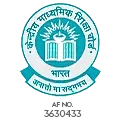The Blended Learning landscape is gradually becoming more advanced and pushing the boundaries of learning with seamless use of online resources and traditional methods of teaching. With technology as an integral part of all aspects of teaching and learning today, Blended Learning is offering flexibility and ease of learning to the learners. This method is set to be the new face of education in the years ahead, where the student imbibes the learning in the way that is most effective for their advancement.
What makes Blended Learning so unique?
What began as ease of teaching and learning, the hybrid model of blended learning with the optimal use of technology at hand provides each student with the freedom to learn at their preferred pace or methods rather than learning from textbooks by rote. With time, blended learning has shown benefits of fostering collaborative learning and critical thinking from a young age. The student has the opportunity to truly understand the information rather than testing their ability to cram. Learning management systems and simulated virtual lessons allow for interactive learning possibilities, finally embracing the golden rule of – every child learns differently, and that there is no singular best method of imparting knowledge. Within the blended classroom, the smooth integration of technology-driven course material and in-person learning makes it an incomparable experience.
In a bid to foster independent learning, the blended curriculum is gradually being rolled out with the flexibility for the varying learning pace within the same classroom – difficult tasks for the advanced learners and extra exercises for those who may need a little extra help. No judgement, no pressure. Learning made easy for all.
Types of Blended Learning
The following blended learning models allow schools to customize approaches based on resources, student needs and goals:
- Station Rotation: Students rotate between stations in the classroom, with some focused on online learning, others on group work, and some on direct teacher instruction. For example, a science class might have students analyze data online, conduct experiments in groups, and discuss findings with the teacher.
- Flipped Classroom: Students learn new content at home via videos or online modules, then use class time for hands-on activities or discussions. This is one of the most popular blended learning examples, with deeper engagement during face-to-face sessions.
- Flex Model: Students follow a personalized online curriculum, with teachers providing support as needed in the classroom. This model works well for self-directed learners.
- Enriched Virtual: Most learning happens online, with occasional in-person sessions for collaboration or assessments, ideal for older students or hybrid programs.
Why the Blended Classroom is the future
With myriad benefits of Blended Learning, this method of experiential learning is sure to be the way forward. The ease of learning integration allows students to take charge of their learning process using self-paced digital tools and teachers to incorporate data from online resources to include into their lessons. This makes the blended classroom the best practice for a fast changing world using technology at hand.
Digital literacy is gradually becoming a benchmark of learning from an early age, paving the way for lateral thinking and honing problem solving skills. Visionary schools like The Premia Academy which embraced blended learning from the very onset, the curriculum allows the students to thrive in both the academic and real-life environments.
Real-world Blended Learning examples
Imagine a history class, where students watch a virtual tour of archeological sites in the country and then debate on related historical events. Or maybe a language class where students write essays, receive peer feedback and teacher guidance -all online This seamless use of technology with human interaction helps create a more dynamic, meaningful learning environment. Blended classroom at its simplest best.
Embracing the future
As experiential learning methodologies advance, blended learning stands out as an effective model for modern classrooms. By combining the finest of conventional and advanced instruction, it makes an adaptable, engaging and comprehensive environment. Whether through a flipped classroom or a flex model, the blended classroom is no longer a passing trend, it is the future of equipping both students and teachers to thrive in an ever changing world.
At the Premia Academy, we leverage technology to help our children with both academics and real world skills. We fervently believe that while online learning is liberalising and democratising education, only online accessibility to education can never substitute a blended learning structure, the power of social interactions and the routine building nature of in-school learning.






